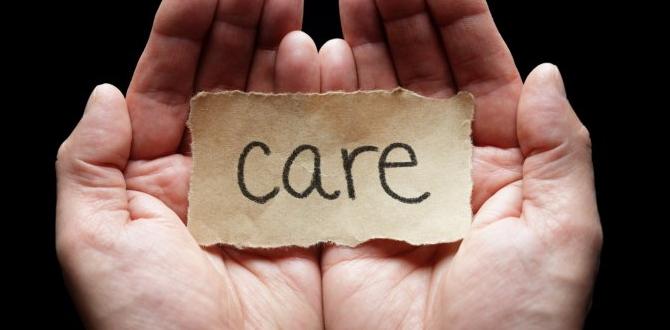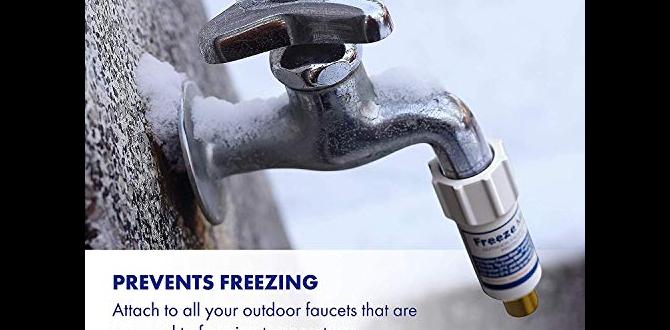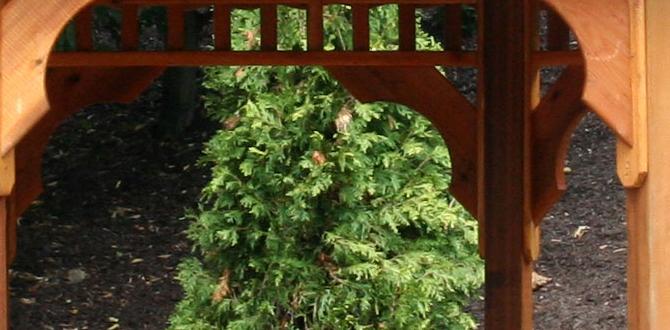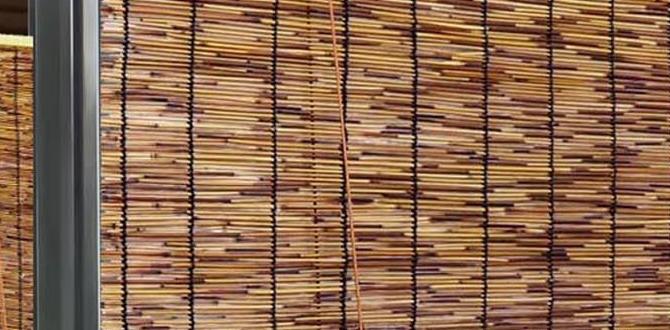Do you dream of fresh basil in your salads? Caring for a basil plant outdoors can be fun and rewarding! Basil grows well in sunny spots and needs a little attention to thrive. Picture this: one morning, you step outside and spot bright green leaves shining in the sun. It just makes you smile, doesn’t it?
But do you know how to care for your basil plant? It’s easier than you might think! Proper watering and feeding make a big difference. Many people believe that basil is tough to grow, but that isn’t true. With the right tips, anyone can do it!
In this article, we’ll explore how to care for basil plants outdoors. You’ll learn simple steps to help your plants flourish. Soon, you will enjoy picking and using fragrant leaves right from your backyard. Let’s dig in and grow some basil together!
How To Care For Basil Plant Outdoors: Essential Tips And Tricks

How to Care for Basil Plant Outdoors
Caring for a basil plant outdoors is simple and rewarding. Start with well-draining soil and choose a sunny spot. Did you know that basil loves warmth? Protect it from frost, especially in early spring. Water your plant regularly, but avoid soggy soil. Pruning helps it grow bushier and tastier. Finally, watch out for pests. They can munch on your plant! With a little effort, you’ll enjoy fresh basil for your meals.Choosing the Right Location
Importance of sunlight for basil growth. Recommended soil conditions and drainage.To grow healthy basil, pick a spot with lots of sunlight. Basil loves the sun and needs at least 6 hours a day. Next, choose soil that drains well. Basil prefers rich, loamy soil that keeps moisture but does not stay soggy. Also, good drainage is key. Here are some tips:
- Location: Sunny area with afternoon light
- Soil: Well-drained, loamy mix
- Drainage: Avoid waterlogged soil
What is the best soil for basil?
The best soil for basil is loamy soil. It should be rich and drain well. This helps roots grow strong and keeps the plant healthy.
Planting Basil Seeds
Best time of year to plant basil outdoors. Stepbystep instructions for sowing seeds.The best time to plant basil seeds outdoors is in late spring after the last frost. Basil loves warm weather and sunshine—think of it as a sunbather! To plant, follow these steps: First, find a sunny spot in your garden. Next, loosen the soil. Then, plant seeds about ¼ inch deep, spaced a few inches apart. Water gently, but don’t drown them! Soon, you’ll have fresh basil to spice up your pasta or pizza.
| Step | Action |
|---|---|
| 1 | Choose a sunny location |
| 2 | Prepare the soil |
| 3 | Sow seeds |
| 4 | Water lightly |
Watering Requirements
How often to water basil plants. Signs of overwatering and underwatering.Watering basil plants is vital for growth. Water them every 2-3 days in hot weather. However, if it rains, check the soil before watering. Here are some signs to look for:
- Overwatering: Leaves turn yellow and droop.
- Underwatering: Leaves wilt and become dry.
Always feel the top two inches of soil. If it’s dry, give your plant some water. Remember, happy plants make tasty basil!
How often should I water my basil plant?
Water basil every 2-3 days. Check for rain, and adjust as needed.
Signs of Overwatering vs. Underwatering
- Overwatering: Yellow leaves and droopy stems.
- Underwatering: Wilting leaves and dry soil.
Fertilizing Your Basil
Types of fertilizers suitable for basil. Frequency and amount of fertilization needed.Basil plants love food, just like us! To help them grow strong, use nutrient-rich fertilizers. Some good options include:
- Organic compost
- All-purpose fertilizer
- Fish emulsion
Fertilize your basil every 4–6 weeks. Use about a tablespoon of fertilizer per plant. This keeps them healthy.
When should I fertilize my basil?
For best results, fertilize your basil in the spring and again in mid-summer. This timing will help them thrive!
Pest and Disease Management
Common pests that affect basil and how to deal with them. Identifying and treating fungal diseases.Pests can harm your basil plants. Common pests include aphids, spider mites, and whiteflies. These tiny bugs suck sap from the plants, making them weak. To fight back, spray a mix of soapy water on the leaves. This will make the pests fall off.
Fungal diseases can also affect basil. Look out for mold or brown spots on the leaves. To treat these, remove the affected leaves and ensure the plant has good airflow and sunlight. Water your basil early in the day to keep leaves dry at night. This helps prevent fungal growth.
What are the common pests that affect basil plants?
Aphids, spider mites, and whiteflies are the most common pests that affect basil plants.How can I identify and treat fungal diseases in basil?
- Look for mold or dark spots on leaves.
- Remove affected leaves immediately.
- Improve airflow around the plant.
- Water early to keep leaves dry.
Pruning and Harvesting Techniques
When and how to prune basil plants for optimal growth. Best practices for harvesting basil leaves.Basil loves a little trim! Prune the plants every few weeks to keep them bushy and happy. Snip off the top leaves to encourage new growth. This is like giving them a haircut, but without the awkward small talk! Harvesting is easy too. Pick the leaves from the top, leaving some so the plant can keep growing. You can store fresh basil in water, like flowers, or pop it in the fridge. Remember, the more you harvest, the more they grow—supply and demand, basil-style!
| Action | Timing | Best Practice |
|---|---|---|
| Prune | Every few weeks | Cut off the top leaves |
| Harvest | When leaves are big enough | Pick from the top |
Winter Care and Season Maintenance
Tips for protecting basil plants in colder months. Transitioning basil plants indoors or extending the growing season.Winter can be a tricky time for your basil plants. They just love the sun but not so much the cold! To keep them happy, try to bring them indoors before the frost arrives. They can still thrive by a sunny window. If you want to extend your growing season outside, cover them with a frost blanket. It’s like giving them a cozy winter jacket! Here are a few tips to help your basil survive:
| Tip | Description |
|---|---|
| Bring Indoors | Move your basil plant inside before the first freeze. |
| Frost Blanket | Use a blanket to protect outdoor plants from frost. |
| Reduce Water | Water less in cooler months; plants need less moisture. |
Following these tips can keep your basil flourishing, even when winter makes its grand entrance!
Conclusion
In conclusion, caring for your basil plant outdoors is simple and rewarding. Remember to give it plenty of sunlight, water it regularly, and keep the soil healthy. Prune the leaves to encourage growth and avoid pests. Start your own basil garden today, and enjoy fresh herbs in your meals. For more tips, check out gardening books or online resources!FAQs
What Are The Ideal Growing Conditions For Basil Plants Outdoors, Including Sunlight And Soil Type?Basil plants love warm, sunny places. They need at least 6 to 8 hours of sunlight each day. The best soil is rich and well-drained, like garden soil mixed with compost. You should keep the soil moist but not too wet. This helps the basil grow strong and healthy!
How Often Should Basil Plants Be Watered, And What Are The Signs Of Overwatering Or Underwatering?You should water basil plants when the top inch of soil feels dry. This usually means watering them every few days. Signs of overwatering are yellow leaves and mushy stems. If your basil is wilting and the leaves are crispy, it might need more water. Remember to check the soil!
What Are Some Common Pests And Diseases That Can Affect Outdoor Basil Plants, And How Can They Be Managed?Common pests that can hurt basil plants include aphids and spider mites. You can manage them by spraying the leaves with water to wash them away. Some diseases like downy mildew can also affect basil. To prevent this, make sure your plants have good airflow and avoid watering the leaves directly.
How Can I Encourage Bushier Growth In My Outdoor Basil Plants?To help your basil plants grow bushier, pinch off the top leaves every few weeks. This helps the plant spread out and grow more branches. Make sure your plants get plenty of sunlight and water them when the soil feels dry. Also, feed them a good fertilizer to keep them strong and healthy.
When Is The Best Time To Harvest Basil Leaves, And How Should They Be Harvested To Ensure Optimal Growth?The best time to harvest basil leaves is when the plant is about 6 to 8 inches tall. You can pick the leaves any time, but morning is best because they have more energy. To harvest, use scissors to cut just above a pair of leaves. This helps the plant grow back stronger and fuller. Always leave some leaves on the plant so it can keep growing!
{“@context”:”https://schema.org”,”@type”: “FAQPage”,”mainEntity”:[{“@type”: “Question”,”name”: “What Are The Ideal Growing Conditions For Basil Plants Outdoors, Including Sunlight And Soil Type? “,”acceptedAnswer”: {“@type”: “Answer”,”text”: “Basil plants love warm, sunny places. They need at least 6 to 8 hours of sunlight each day. The best soil is rich and well-drained, like garden soil mixed with compost. You should keep the soil moist but not too wet. This helps the basil grow strong and healthy!”}},{“@type”: “Question”,”name”: “How Often Should Basil Plants Be Watered, And What Are The Signs Of Overwatering Or Underwatering? “,”acceptedAnswer”: {“@type”: “Answer”,”text”: “You should water basil plants when the top inch of soil feels dry. This usually means watering them every few days. Signs of overwatering are yellow leaves and mushy stems. If your basil is wilting and the leaves are crispy, it might need more water. Remember to check the soil!”}},{“@type”: “Question”,”name”: “What Are Some Common Pests And Diseases That Can Affect Outdoor Basil Plants, And How Can They Be Managed? “,”acceptedAnswer”: {“@type”: “Answer”,”text”: “Common pests that can hurt basil plants include aphids and spider mites. You can manage them by spraying the leaves with water to wash them away. Some diseases like downy mildew can also affect basil. To prevent this, make sure your plants have good airflow and avoid watering the leaves directly.”}},{“@type”: “Question”,”name”: “How Can I Encourage Bushier Growth In My Outdoor Basil Plants? “,”acceptedAnswer”: {“@type”: “Answer”,”text”: “To help your basil plants grow bushier, pinch off the top leaves every few weeks. This helps the plant spread out and grow more branches. Make sure your plants get plenty of sunlight and water them when the soil feels dry. Also, feed them a good fertilizer to keep them strong and healthy.”}},{“@type”: “Question”,”name”: “When Is The Best Time To Harvest Basil Leaves, And How Should They Be Harvested To Ensure Optimal Growth? “,”acceptedAnswer”: {“@type”: “Answer”,”text”: “The best time to harvest basil leaves is when the plant is about 6 to 8 inches tall. You can pick the leaves any time, but morning is best because they have more energy. To harvest, use scissors to cut just above a pair of leaves. This helps the plant grow back stronger and fuller. Always leave some leaves on the plant so it can keep growing!”}}]}






